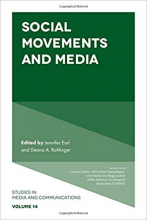
January 1, 2017
Growing interest in the use of digital technologies and a Putnam-inspired debate about youth engagement has drawn researchers from outside of the study of social movements into research on the topic. This interest in youth protest participation has, in turn, developed into a substantial area of research of its own. While offering important research contributions, we argue that these areas of scholarship are often not well grounded in classic social movement theory and research, instead focusing on new media and/or the relationship between activism and other forms of youth engagement. This chapter seeks to correct this by drawing on interviews with 40 high school and college students from a moderately sized southwestern city to examine whether traditional paths to youth activism (i.e., family, friends, and institutions) have changed or eroded as online technology use and extra-institutional engagement among youth has risen. We find that youth continue to be mobilized by supportive family, friends, and institutional opportunities, and that the students who were least engaged are missing these vital support networks. Thus, it is not so much that the process driving youth activism has changed, but that some youth are not receiving support that has been traditionally necessary to spur activism. This offers an important reminder for scholars studying youth and digital activism and youth participation more broadly that existing theory and research about traditional pathways to activism needs to be evaluated in contemporary research.
Maher, Thomas V., and Jennifer Earl. 2017. “Pathways to Contemporary Youth Protest: The Continuing Relevance of Family, Friends, and School for Youth Micromobilization.” Studies in Media and Communications 14:55-87







